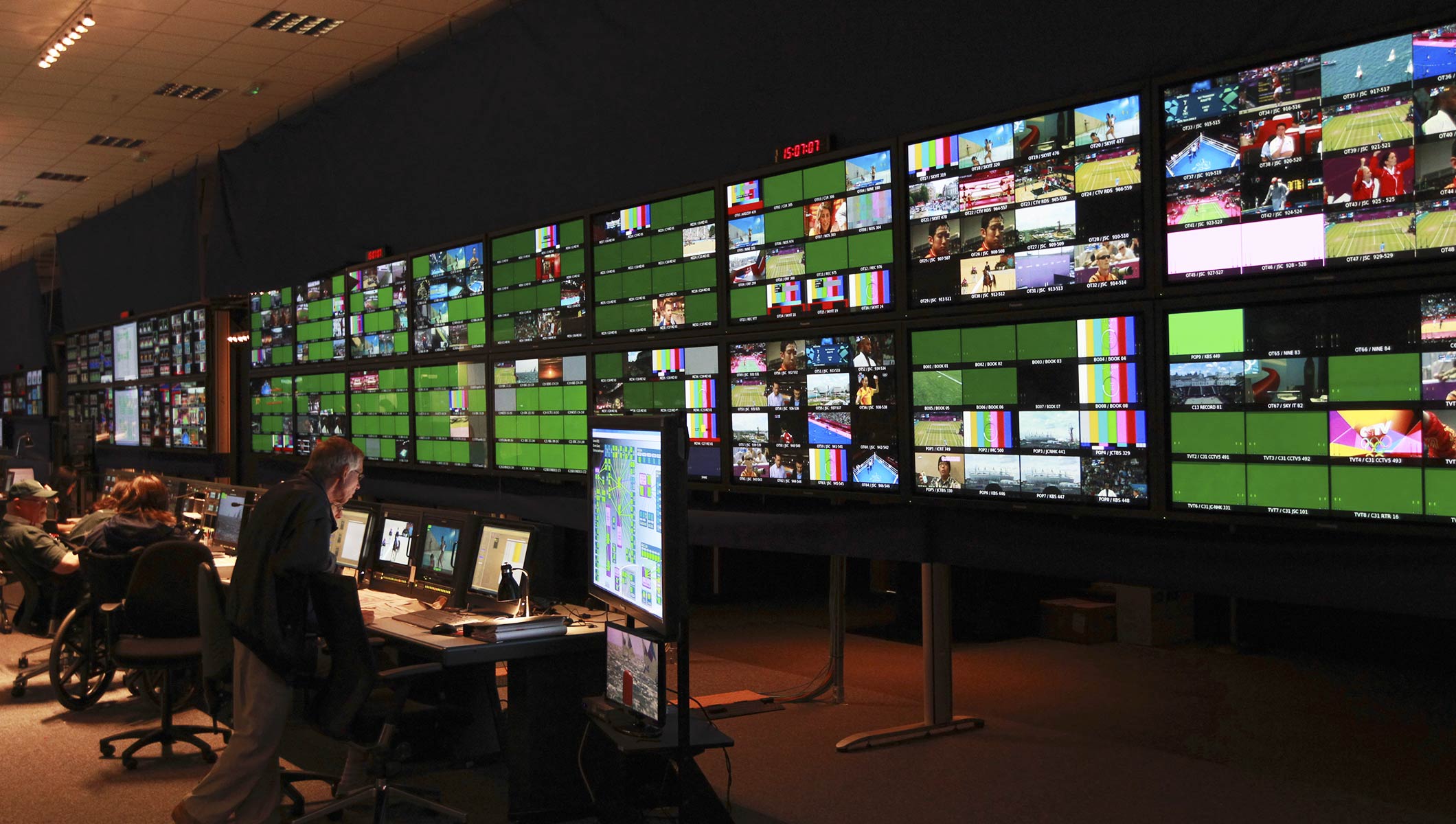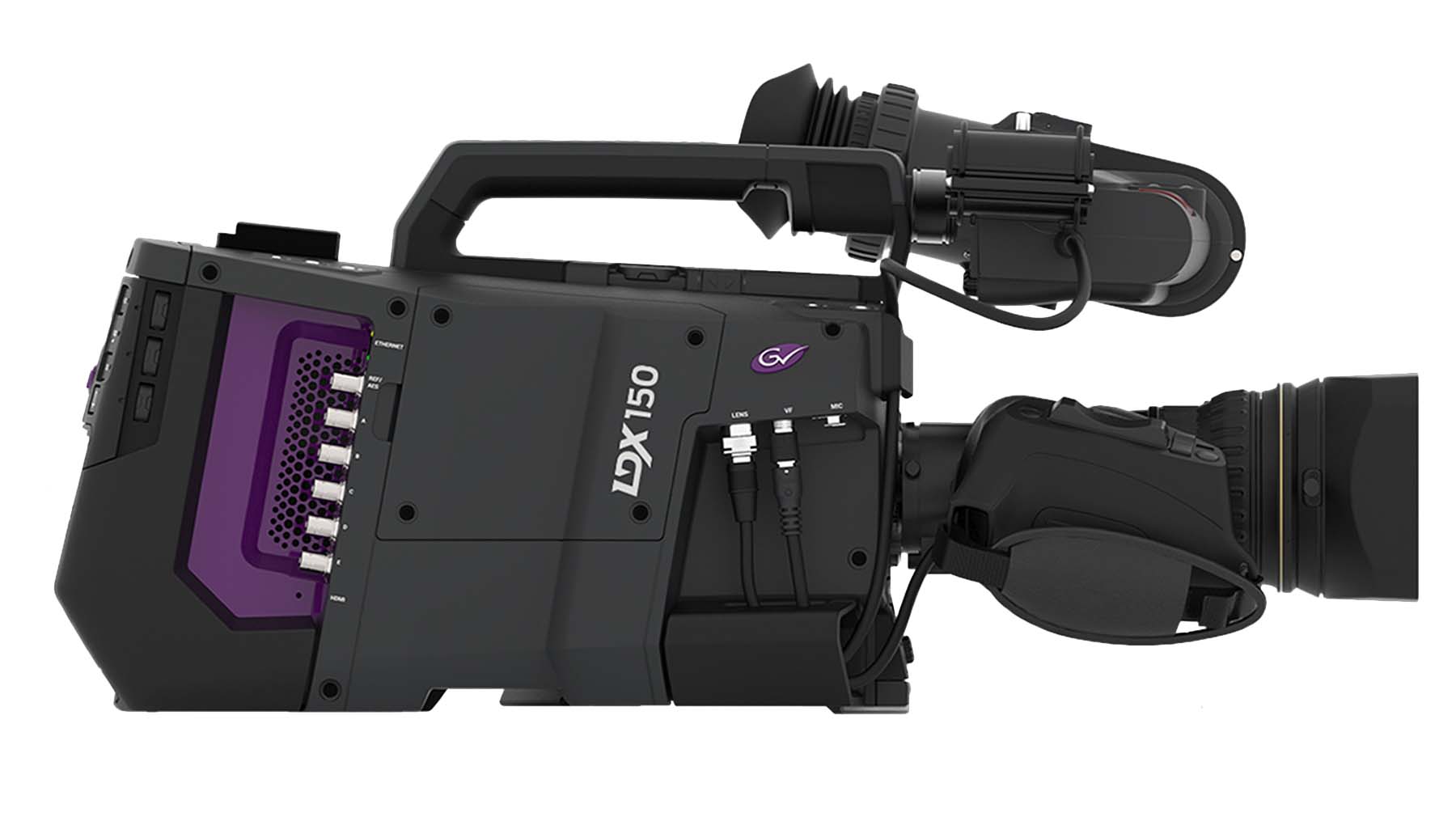Live Production Over IP Now Becoming the Standard
Could the days of SDI be numbered?

ALEXANDRIA, Va.—Live production over IP is not exactly a new idea—the SMPTE ST2110 standard for IP video was finalized in its present form in September 2018—but time has allowed manufacturers and producers to figure out the best practices. This means that SDI is now not the only accepted technology for interconnecting equipment for a live production system.
Increasingly, broadcasters and remote truck operators are opting for IP systems to handle the signals in their new facilities.
“IP certainly provides the same levels of reliability and quality as traditional SDI workflows, thanks to significant advances made in IP platforms and IP-based solutions,” said Marco Lopez, general manager for live production at Grass Valley. “IP workflows unlock unprecedented flexibility and scalability, with many world-leading broadcasters already recognizing its transformational potential.”
Lopez pointed out that NBC Sports recently upgraded its Stamford facility with an IP-first infrastructure, while earlier this year several media enterprises delivered live production for the Tokyo 2020 Olympics over IP, including NBC Olympics and Discovery Eurosport.
“But this doesn’t only apply to fixed facility live production,” Lopez said. “We’re seeing the increased adoption of all-IP workflows from multiple mobile production companies, including NEP, Game Creek Video and All Mobile Video.”
STANDARD OF CHOICE
SDI has been the interconnection standard of choice for broadcasters and production trucks, and there is no denying the reliability the made-for-television standard has had over the years.
However, there have been several SDI upheavals as the standard adjusted first from standard definition to 1.5G HD to 3G to 6G, and most recently to 12G connection speeds. Moving up to the next generation of SDI usually meant new cable and connectors, not to mention replacing the gear where the cable and connectors terminated.
Get the TV Tech Newsletter
The professional video industry's #1 source for news, trends and product and tech information. Sign up below.

“Even though SDI is still being specified for new installs, it is safe to say that IP is the protocol of choice for greenfield projects and broadcasters that want to leverage the advantages of future-proof decentralized, distributed (remote) production, combined with centralized production and processing resources in affordable, off-premise areas,” said Andreas Hilmer, chief marketing officer for Lawo. “On the whole, SDI is today chiefly used for small-sized facilities and small- to medium-sized OB trucks.”
Given the resounding success of continent-wide or even continent-hopping remote production setups for events watched by billions around the globe, Hilmer said that few broadcasters will argue that IP is less reliable than SDI. Most agree that it is more convenient, thanks mainly to reduced cabling efforts.
“Using SDI-to-IP gateways can turn the migration from SDI to IP into a gradual process, allowing broadcasters to keep using their SDI equipment (cameras, switchers, etc.) until it reaches end-of-life,” Hilmer said.
ALREADY PROVEN
Although IP broadcast standards will probably adjust over time as well, it is starting out with the ability to support 4K live broadcasts, and has already proven itself at several high-profile live events. The current maximum speed with copper cables is 10 GbE (10 Gbps), which requires Category 6 or 6a cables. For faster speeds than that, fiber cables must be used for 25 GbE, 40 GbE and 100 GbE.
In concert with faster data speeds available with IP production systems, there has also been a lot of work in signal compression to reduce the data needs while maintaining image quality.
“4K Ultra HD over IP technology is reliable for live production,” said Ronan Poullaouec, chief technology officer at AVIWEST. “[We have] two new products: the RACK400 4K Ultra HD encoder and the PRO460 4K Ultra HD and 5G transmitter, which are both dedicated to live production. Both these products support 4K UHD and multicamera workflows for up to four HD, fully frame-synced feeds, as well as the latest generation of H.265/HEVC and H.264/AVC compression standards.”
Cameras have jumped on the IP production bandwagon as well. For example, the Grass Valley LDX100 and LDX150 NativeIP cameras connect over a standard SMPTE hybrid fiber cable and also have IP functionality that can provide uncompressed or compressed streams.

You can go live with IP connectivity with much more modest cameras—cell phone cameras, for example.
“The integration of incoming IP feeds from any device anywhere is now seamless and easy to implement with Avid’s MediaCentral|Stream for contribution over bonded cellular, Wi-Fi, 4G/5G, and standard internet,” said Ray Thompson, senior director for partner and industry marketing at Avid. “For media companies using any camera, backpack unit [LiveU, TVU, Sony, Dejero, etc.], encoding device [Teradek, Haivision and more] or mobile device, contribution into the MediaCentral platform production environment is as easy as sending an SRT or RTMP stream.”
IS CLOUD A CHEAPER OPTION?
An interesting possibility to arise in the last couple of years is the option of doing a live production in the cloud. There are services and products that allow for switching, editing and quality control from the cloud, with a minimal layout of equipment.

“Live production in the cloud is bringing a new level of flexibility to different types of playout workflows,” said Jérémy Krein, product manager for live video and graphics solutions at Dalet. “With production tools hosted in the cloud, it is now easier and cheaper to produce a live broadcast directly from the event location. A cloud production environment is also faster to deploy and does not impact the on-premises infrastructure. With such solutions, customers can spin up new channels quickly to deliver specific events.”
Krein pointed out that, with cloud platforms being accessible from anywhere, disaster recovery can be better addressed. If there was a major interruption on-premises, production workflows in the cloud can provide program continuity.
The security of working in the cloud might deter the timid, but Krein stated that the right design will be secure.
“Disruption is always a possibility so it’s important to plan appropriate redundancy and protection,” he said. “A well-planned solution architecture is critical to ensure security in a cloud playout workflow. For added security, cloud infrastructure can be part of a virtual private network, separate from public networks and protecting all network connections via SSL.”
Time and chance may happen to all, but the race generally does favor the swift. Broadcasters that embrace IP production will find it is faster to create, revise and target their offerings.
“Broadcasters should absolutely be planning and using a cloud-based workflow for on-air events,” said Jared Timmins, senior vice president of solutions at TVU Networks. “It’s more reliable, flexible and less labor-intensive than traditional workflows. It also allows for business model experimentation, such as tailoring a channel toward a specific demographic or area of interest. You don’t need to wait years to amortize equipment costs—with a cloud-based workflow you can make new content decisions and monetize content in a way you can’t in a fit-for-purpose world.”
STANDARD FOR LARGE OPERATIONS
Timmins said that live production over IP is not only available today, it is the standard for large-scale operations.
“The cloud is now, not in the future,” he said. “We’ve had solutions that address this for at least two years, with our TVU RPS synchronized multicamera remote production and TVU Producer cloud-based live production tools. Virtualization is so advanced that every large-scale production now uses cloud-based tools to some extent. Who’s touching what equipment for remote production is being completely re-imagined.”
The rapid growth in capabilities of computers and the networks to which they are attached has revolutionized how big productions are structured. At the moment, the savings in time and expense really makes sense for the largest operators. However, tools for small-to-medium program producers will fall, as cloud capacity grows and costs decline.
The Museum of Once-Popular Broadcast Technologies needs to start preparing a space for SDI—probably right next to 1-inch recorders and standalone character generators.
Bob Kovacs is the former Technology Editor for TV Tech and editor of Government Video. He is a long-time video engineer and writer, who now works as a video producer for a government agency. In 2020, Kovacs won several awards as the editor and co-producer of the short film "Rendezvous."

